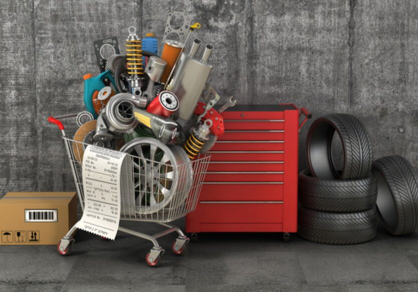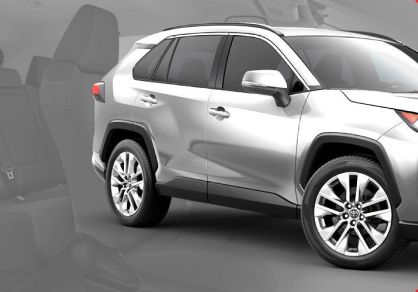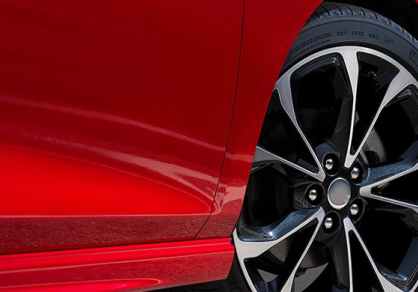Car electronic systems that have a microcontroller are called an Electronic Control Unit (ECU). In Iran, only the electronic injector system is often known as the ECU, but in this article, we call systems with microcontrollers ECU in accordance with the common technical terminology in the global automotive industry.
The design and construction of the ECU is one of the key technologies in the modern automotive industry. An ECU consists of a set of hardware and software that is responsible for monitoring, adjusting or directing a specific function in the vehicle. Anti-lock brakes (ABS), airbag safety systems and rain-sensitive wipers are examples of ECU applications. The beginnings of ECU technology go back to the injection system of the German company Bochs called JETronic, which was installed in 1968 in the Volkswagen VW 1600TL.
The importance and economic and technical role of ECU and especially its software in car manufacturing is increasing day by day. According to forecasts, the share of electronics in the cost of building a car will increase from 22% in 2000 to 35% in 2010. Also, the share of cost of electronic software used in cars from 20% in 2000 to 38% in The year 2010 will arrive.
In general, electronic control units are capable of performing the following three functions:
Monitoring of vehicle functions and alerting the driver, such as monitoring fuel consumption and alerting the driver to current or average fuel consumption, or monitoring the position of the doors and alerting the driver to their openness.
Regulating vehicle functions by constantly optimizing them, such as adjusting engine fuel consumption by the electronic control unit of the injector system.
Controlling vehicle functions by calculating output quantities based on input data, such as anti-lock braking system (ABS). In most electronic control units, there are three functions: monitoring, adjusting and controlling simultaneously.
Electronic control unit structure:
The electronic controller unit consists of a microcomputer or microcontroller (Micro Controller) as the hardware and software that runs on it. A microcontroller is a small computer that has all the components, such as CPU, input and output (I / O) units, various erasable and read-only memory to store programs and data. They are usually mounted on a chip, the important point in building the hardware of the electronic control unit is its resistance to temperature changes, humidity and strong shocks that are exposed to it after installation in the car, as well as high electromagnetic compatibility ( EMC) it is.
The number of software in an electronic control unit depends on its complexity. In simple electronic control units, the only software that is installed and run on the microcontroller is the relevant application. In its complex type, first the real-time operating system (Real Time Operation system) RTOS and basic software, such as network management software, memory management, etc. are installed on the microcontroller and then the application, which is one of the services provided by the system. Benefits operating system and software.
The main part of the technology of electronic control units is related to their application software. This part is also the main driving force of innovation in the automotive industry today.
Microcontroller hardware, real-time operating systems, and other basic software required by electronic control units are supplied by world-renowned manufacturers, such as AMD, NEC, and Motorola. , Building application software, especially control and quality assurance of the entire system. Improving software quality depends on software engineering methods and tools in the field of requirements management (modeling), modeling, generating program code from the model, documenting and testing software.
The reason for the great importance of quality in the construction of electronic control units is the role of electronic control units in vehicle safety and the destructive effects of their improper operation on customer trust. The software provides a list of corrected inaccuracies. The manufacturer of the car electronics unit must ensure from the very beginning of the design of the component, that the product will reach the customer without any defects or inaccuracies.
The electronic control unit typically receives the necessary data from the environment through sensors and after processing them, transmits the appropriate commands to the actuators. The actuators, in turn, direct the work of the controlled mechanical, hydraulic, pneumatic, or electrical tools according to the commands they receive from the electronic control unit.
The role of electronic control units in the vehicle
Today, the increasing number of electronic control units used in car manufacturing is over 70 units. In “luxury” group cars, up to 110 electronic control units have been installed.
The set of electronic control units of a car can be divided into four application areas:
1- Body, such as lifting glass, seat adjustment and automatic wiper.
2- Power transmission, such as engine and gear control
3- Chasis / Driving functions such as Distronic, Esp and ABS.
4 – Telematics (Telematic / infotainment / multimedia), such as navigation system (radio), radio, telephone and Internet.
From another point of view, car electronics are generally related to one of the two areas of safety (Safety) and comfort (Comfort). Functions such as room temperature regulation and the Internet are comfortable and functions such as ABS and AirVag increase the safety of the driver and passengers.
The vehicle’s electronic control units interact with sensors and actuators. For example, the ABS electronic control unit receives sensors such as data on brake pedal position, steering wheel rotation, and rotational and linear speeds of the wheels, based on which it calculates the force on the wheel brakes and transmits it to the brake actuators. Various electronic control units, sensors and actuators are connected to each other by hardware and software systems of data transmission (Bus). The most important data transmission system in the vehicle (Control Area Network) is CAN. In Iranian Peugeot cars, in addition to CAN, another data transmission system called VAN is used. In recent years, other data transmission systems, such as FlexRay, Lin, and MOST, have been defined to be used in various areas of vehicle electronics.
Strengthen the electrical and ignition system
One of the ways to increase the power of the car is to strengthen the electrical system and ignition in the car. In general, an ignition system is divided into several parts:
Coil
دلکو
ويرشمع.
.MSD Igenation System
Consisting of amplifier coils and spark plug wires, the power amplifier delivers to the coil after amplification and a stronger power coil to the rest of the system.
The difference between this system and the standard system is that the electricity generated in the coil after installing the amplifier or Igenation Control is stronger and more regular than the standard system, so that in the standard system, low RPMs enter the coil regularly. The standard coil responds well to ranges below 3000, but when the engine speed increases, the capacitive state of the coil disappears and it can not store the exact power in itself and it works, it becomes irregular and loses its main power. The second problem Output power from the coil, which increases the output current depending on its class by installing MSD, MSD has different classes:



